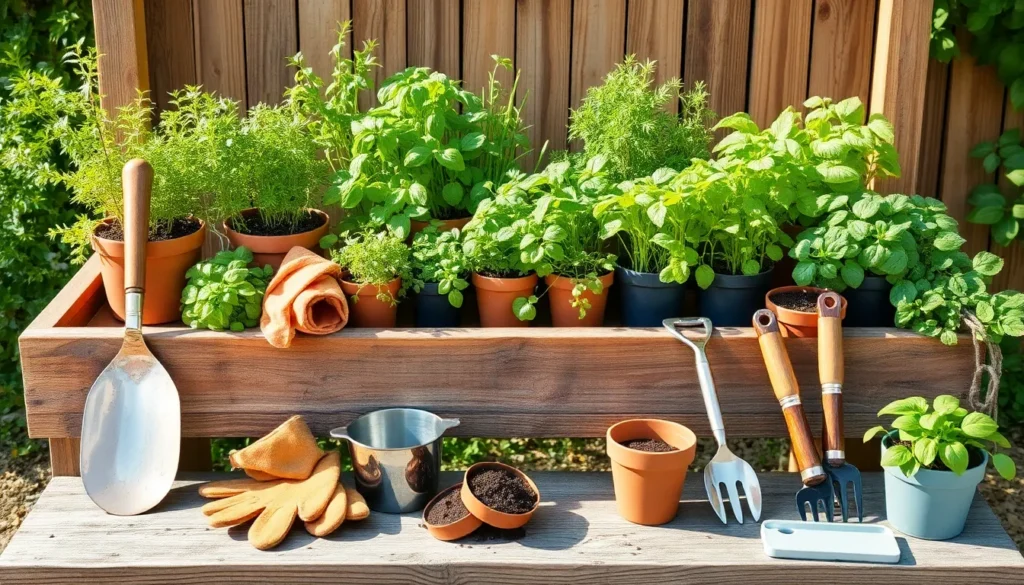Herb gardening is a delightful pursuit that combines the joys of nurturing life with the practical benefits of having fresh ingredients at your fingertips. Whether you’re just starting out with a few pots on the windowsill or tending a lush, fragrant garden bed, the right tools can make all the difference in cultivating a thriving herb paradise. With the right tools, even the most novice gardener can nurture plants with the confidence of a seasoned pro.
For beginners, the world of gardening can seem overwhelming, but fear not; the right set of tools will set you on the path to success. From efficient pruning shears to ergonomic trowels, we’ll guide you through the essentials that will simplify your gardening journey and enhance your green thumb. Experienced gardeners will find that fine-tuning their toolkit with these must-have items will not only streamline the gardening process but also enrich their connection with each herb they tend.
In this article, we will explore 15 indispensable tools that will empower you to cultivate your herbs with ease and precision. With each tool, you’ll discover its unique role in making your gardening experience more enjoyable and productive. So, whether you’re coaxing basil to thrive on your balcony or planning a robust rosemary hedge, these tools will become trusted allies in your gardening adventures. Let’s dive into the world of herb gardening and equip you with the knowledge and tools to grow your herb garden into a lush, aromatic haven.
Introduction to Herb Gardening Tools
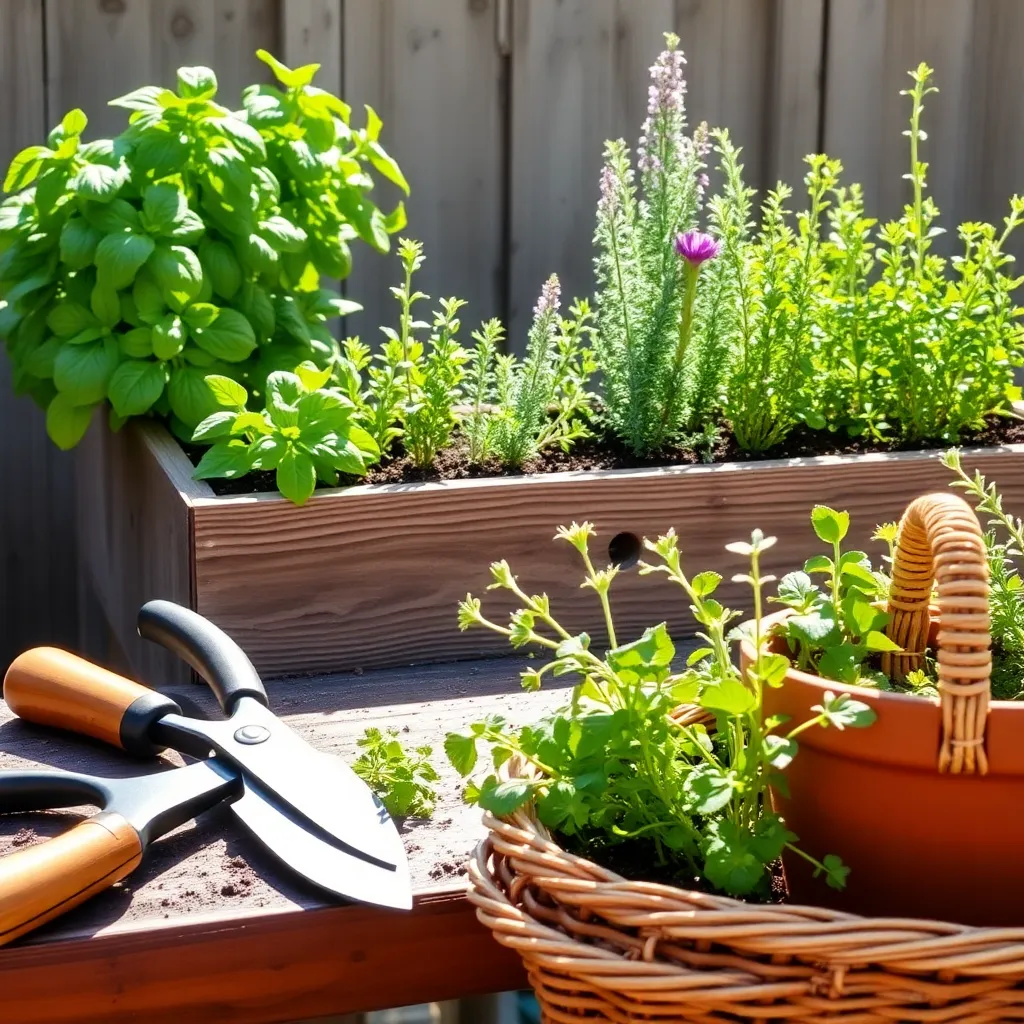
When starting an herb garden, having the right tools can make the experience both enjoyable and successful. Basic tools like a hand trowel, pruning shears, and garden gloves are essential for planting, maintaining, and harvesting your herbs efficiently.
Investing in quality tools will save you time and effort in the long run. For instance, a good pair of pruning shears will help you keep your herbs tidy and promote healthy growth by easily trimming away dead or overgrown branches.
For beginners, a small watering can with a narrow spout is crucial to avoid overwatering delicate herb seedlings. Herbs like basil and thyme prefer well-drained soil, so use the watering can to provide just enough moisture without saturating the soil.
Experienced gardeners may want to explore specialized tools like a soil pH meter or a moisture sensor. These tools can help you monitor and adjust the growing conditions to suit specific herbs, ensuring they thrive in your garden.
Choosing the Perfect Garden Trowel

Having the right garden trowel is essential for every herb gardener, as this tool aids in tasks like digging, planting, and transferring soil. When selecting a trowel, consider the material and weight that best suit your gardening style and strength.
Opt for a trowel with a stainless steel blade for durability and rust resistance, which is especially important if you’re gardening in humid conditions. A comfortable handle, such as one made from cushioned or soft-grip materials, can reduce fatigue during extended gardening sessions.
Beginners might prefer a general-purpose trowel with a slightly curved blade, which is versatile for many tasks. More experienced gardeners might choose a trowel with measurements marked on the blade, which is helpful for planting at correct depths.
For those working with compact or rocky soil, a trowel with a narrower blade can penetrate more easily, making planting less strenuous. Additionally, consider the size of the trowel relative to your typical planting needs; a small, lightweight trowel is often sufficient for herb gardens.
Precision Pruning Shears for Herbs
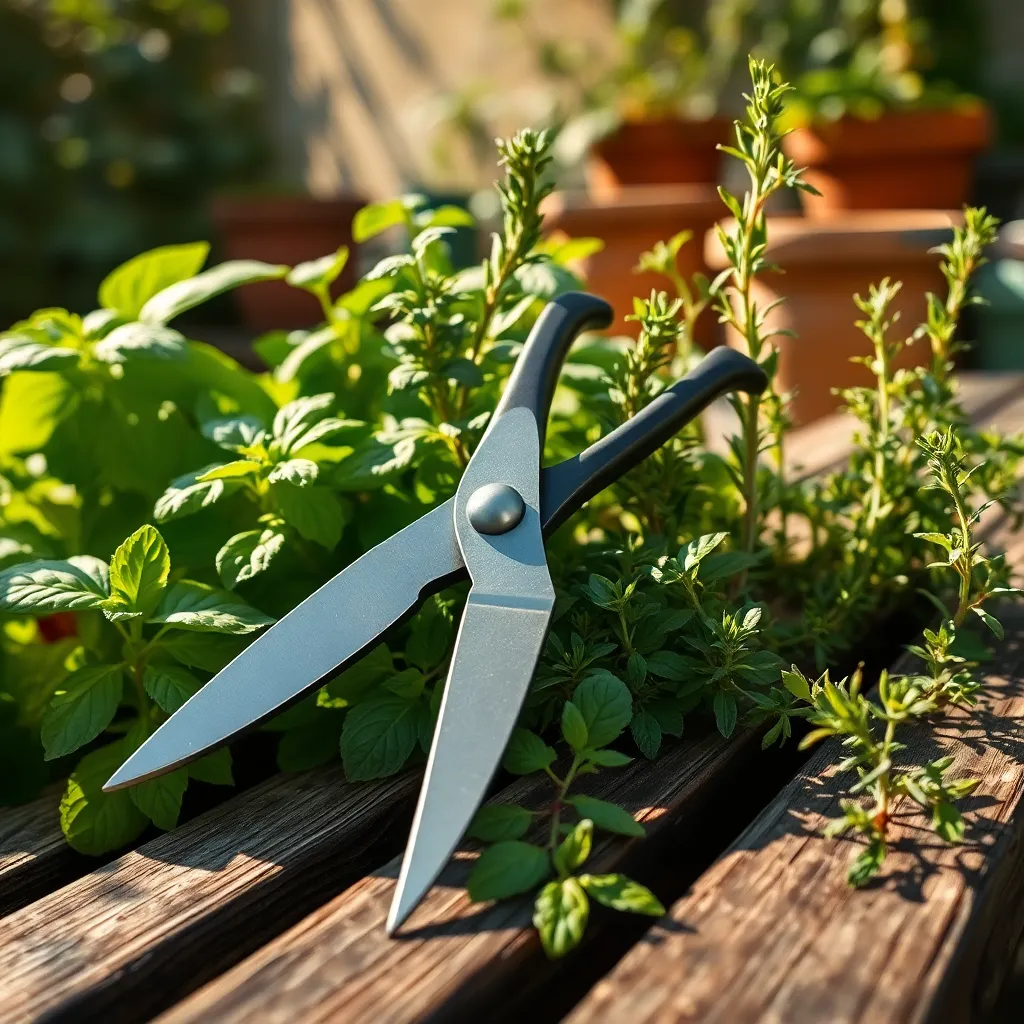
Precision pruning shears are essential for maintaining healthy herb plants, ensuring they remain vibrant and productive. When selecting pruning shears, look for ones with sharp, stainless steel blades and a comfortable grip to ease the trimming process.
Regular pruning encourages herbs to grow bushier and more robust, providing you with a fuller harvest. For best results, trim your herbs in the morning when the plants are least stressed, and avoid cutting more than one-third of the plant at a time.
Beginner gardeners should start by pruning common herbs like basil and mint, which respond well to regular trims. By pinching off the top leaves, you encourage new growth and prevent the plants from becoming leggy or flowering prematurely.
For advanced gardeners, consider using precision shears to shape your herbs into specific forms or to control their growth direction. Regular maintenance of your shears by sharpening the blades and oiling the joints will ensure they perform optimally, extending their lifespan and keeping your herbs in tip-top shape.
Sturdy Hand Fork Essentials
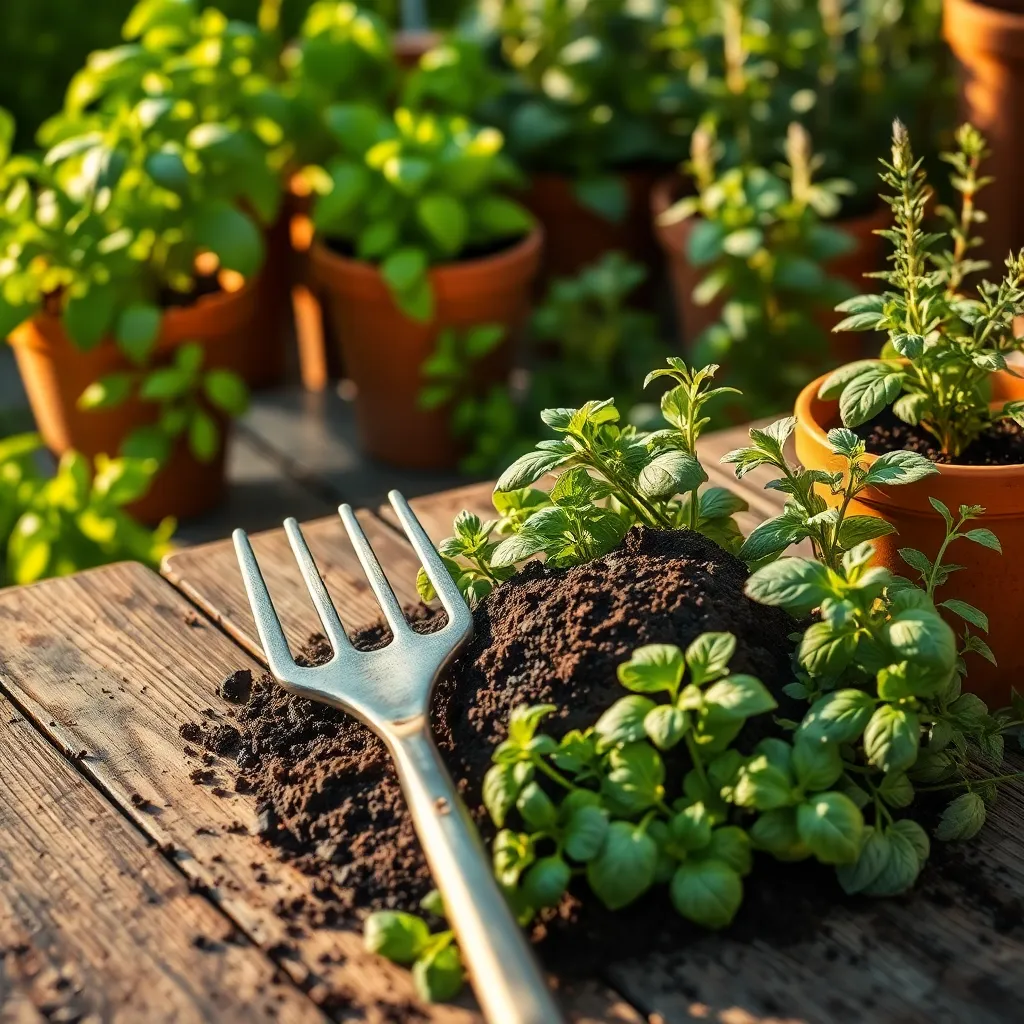
A sturdy hand fork is an essential tool for every herb gardener, offering versatility and ease of use. This tool is perfect for loosening, lifting, and turning over soil, which is crucial for maintaining healthy herb beds.
When selecting a hand fork, opt for one with a comfortable grip and durable tines, preferably made of stainless steel. Durability is key, as herb gardening often involves working with compacted soil or areas with dense roots.
Using a hand fork effectively can improve soil aeration, allowing roots to breathe and absorb nutrients more efficiently. Regularly aerating the soil with a hand fork helps herbs like basil and parsley thrive, especially in containers or raised beds.
For best results, use your hand fork to gently work organic matter, such as compost, into the soil. This not only enriches the soil with nutrients but also enhances its structure, promoting better drainage and reducing compaction over time.
Reliable Watering Can Features
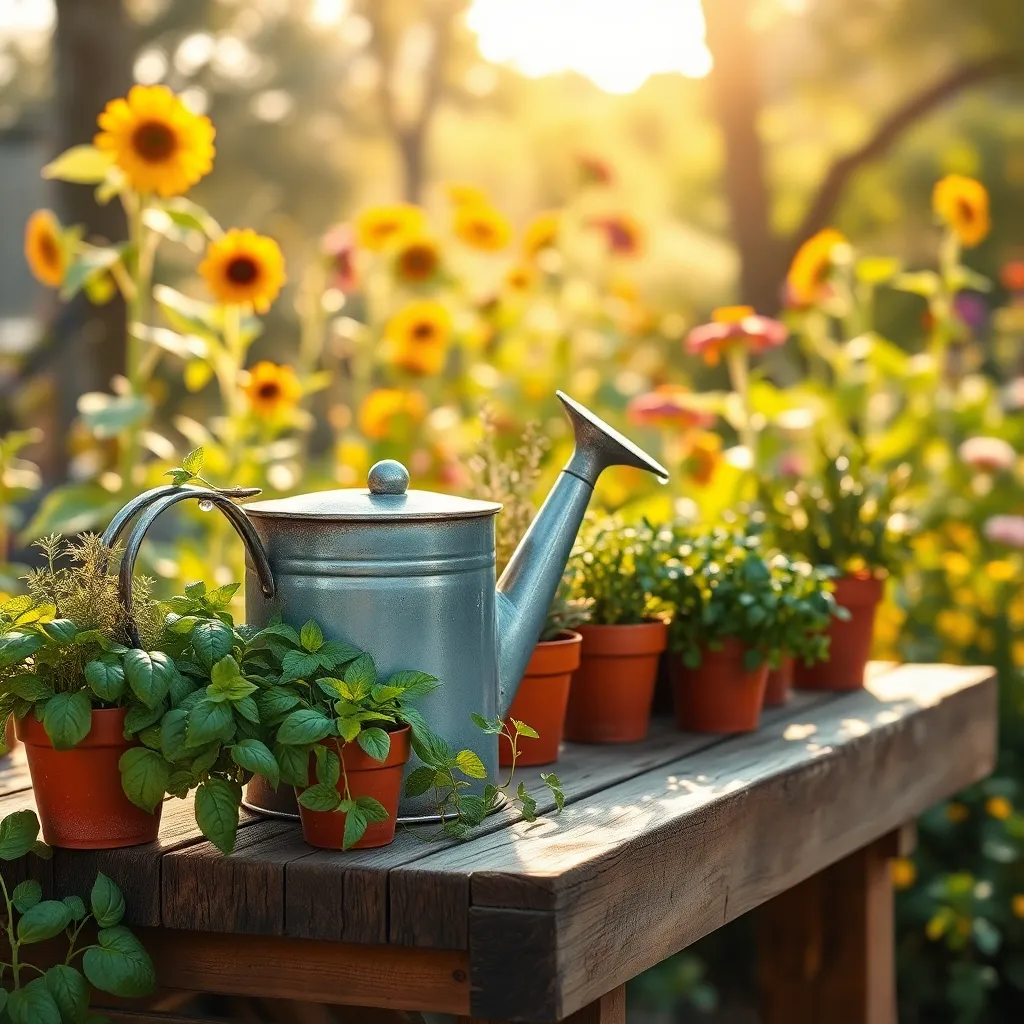
Choosing the right watering can is essential for maintaining the health of your herb garden. Look for a can with a long spout to reach the base of your plants, minimizing the risk of wetting the leaves, which can lead to disease.
Opt for a watering can with a removable rose attachment to provide gentle, even watering. This feature allows you to easily switch between a shower-like spray for delicate seedlings and a direct pour for established plants.
Consider the capacity of the watering can to suit your garden’s size. A two-gallon can is usually sufficient for small to medium herb gardens, ensuring you have enough water without it being too heavy to handle.
For those with larger herb gardens, a lightweight, durable material such as galvanized steel or robust plastic can make a significant difference. These materials not only provide longevity but also ease of use, as they resist rust and are less prone to cracking over time.
Benefits of a Garden Kneeler
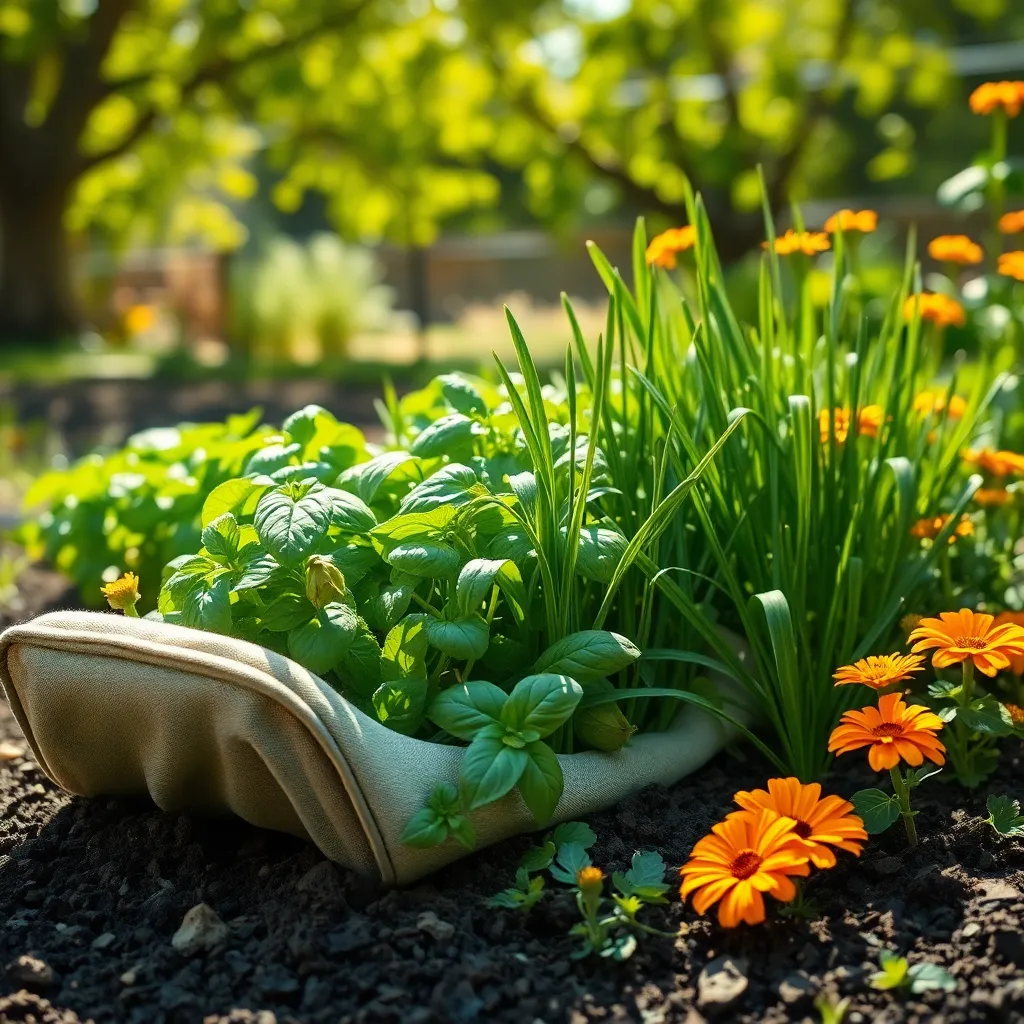
Gardening often requires you to work close to the ground, and a garden kneeler can be an invaluable tool. It provides a comfortable cushion for your knees while you plant, prune, or harvest your herbs, reducing strain and preventing discomfort.
For those with limited mobility, a garden kneeler can make a significant difference. It often comes with sturdy handles that help you safely lower into and rise from a kneeling position, making gardening more accessible and enjoyable.
Consider using a garden kneeler that doubles as a seat. Simply flip it over, and you have a convenient bench for tasks like pruning herbs, where you might want to sit for precision.
To maximize its utility, opt for a garden kneeler with built-in storage pockets. These pockets can hold essential tools, such as pruners and a trowel, so you have everything you need within arm’s reach, enhancing your gardening efficiency.
Versatile Herb Scissors Selection

Herb scissors are a versatile tool that can significantly enhance your herb gardening experience. Designed with multiple blades, they allow you to quickly snip herbs with precision, saving time and effort compared to using regular scissors.
When selecting herb scissors, consider ones with stainless steel blades for durability and easy maintenance. This ensures they remain sharp and rust-free, even after frequent use and washing.
For beginners, herb scissors can simplify the process of harvesting herbs like basil, mint, and parsley. Simply position the scissors at the base of the stem and cut, promoting healthy regrowth of your plants.
Experienced gardeners will appreciate the efficiency of herb scissors for tasks such as creating consistent cuts for drying herbs. This consistency is essential for achieving uniform drying times, which helps in preserving maximum flavor and aroma.
To maintain your herb scissors in top condition, clean them after each use to prevent residue build-up. A quick rinse with warm water and a gentle scrub with a soft brush will keep them ready for your next gardening session.
Multipurpose Garden Hoe Uses
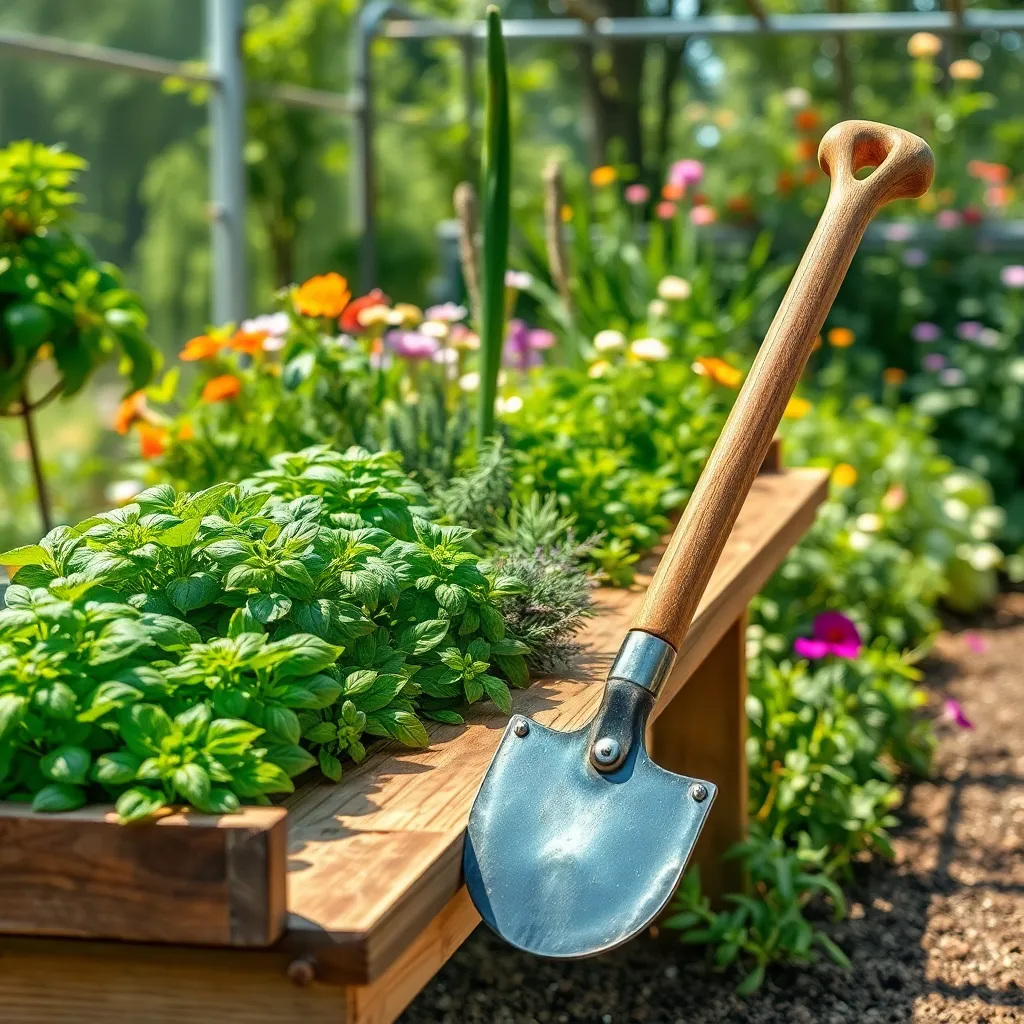
A multipurpose garden hoe is an essential tool for herb gardening, offering versatility in a variety of tasks. Its design allows gardeners to easily cultivate soil, remove weeds, and create furrows, making it a time-saving asset in your gardening toolkit.
When tending to your herb garden, use the hoe to break up compacted soil and improve aeration, which is crucial for root development. Loosened soil enhances water absorption and drainage, promoting healthier plant growth and reducing the risk of root rot.
For weeding, position the hoe slightly below the soil surface to slice weeds at their roots, effectively preventing regrowth. This technique is especially beneficial for herbs like mint and oregano, which can be overtaken by aggressive weeds if not managed properly.
Experienced gardeners can use the hoe to create uniform rows for planting seeds or seedlings, ensuring consistent spacing and depth. Maintaining proper spacing allows herbs to thrive by reducing competition for nutrients and sunlight. Use this method particularly for herbs like basil and parsley, which benefit from organized planting.
Effective Soil Testing Kits

Understanding your soil’s composition is crucial for a successful herb garden. Effective soil testing kits provide valuable insights into your soil’s pH, nutrient levels, and texture, enabling you to tailor your gardening approach accordingly.
For beginners, using a basic soil test kit can be a game-changer. These kits are generally easy to use and can reveal whether your soil is acidic, neutral, or alkaline, helping you choose the right herbs to plant.
Advanced gardeners might consider investing in more comprehensive testing kits that provide detailed nutrient profiles. Knowing the levels of nitrogen, phosphorus, and potassium in your soil allows for precise fertilization, ensuring your herbs thrive.
Once you’ve tested your soil, adjust your gardening practices based on the results. For instance, if your soil is too acidic, adding lime can help balance the pH, while compost can improve soil structure and nutrient content.
Handy Garden Gloves for Protection

Wearing the right garden gloves is essential for protecting your hands while working with herbs. Choose gloves made of breathable material to keep your hands comfortable and prevent irritation during long gardening sessions.
Properly fitted gloves ensure dexterity and precision, especially when handling delicate herb plants. Opt for gloves with reinforced fingertips and palms to provide extra protection when dealing with thorny or abrasive plants.
For those who enjoy planting in wetter conditions, consider using waterproof gloves to keep your hands dry. Waterproof gloves are particularly useful when you are dealing with moist soil or during rainy periods.
Experienced gardeners might want to invest in gloves with extra grip for handling tools and pots with ease. This feature proves invaluable when you need to maintain a steady hold, especially if you are working with slippery surfaces or heavy items.
Durable Plant Markers Guide
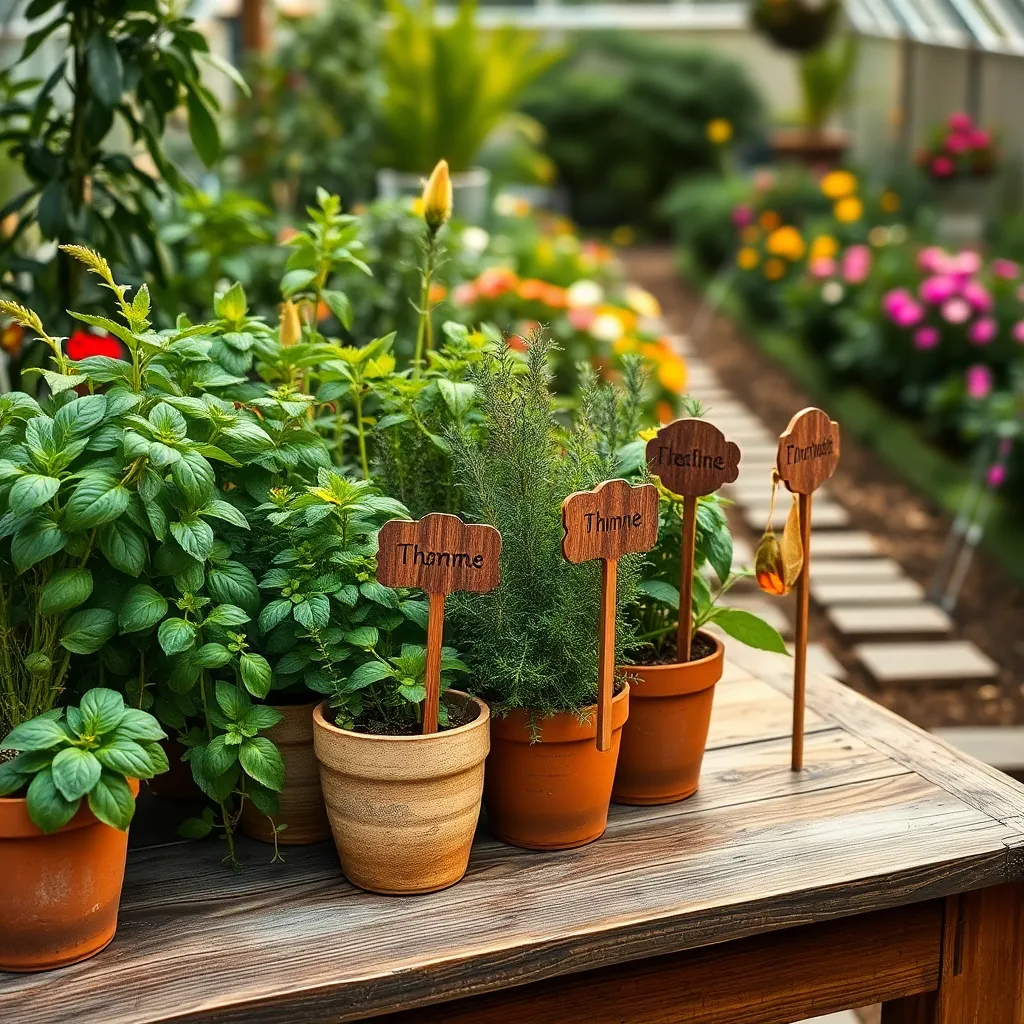
Durable plant markers are essential for keeping your herb garden organized and ensuring you can easily identify each plant. Investing in high-quality markers prevents confusion, especially when your herbs have similar leaf shapes.
Consider using markers made from materials like stainless steel or copper, as they withstand the elements and resist rust. These markers are not only functional but also add a touch of elegance to your garden space.
For a more personalized touch, you can create your own markers using flat stones or wooden sticks and waterproof paint. This DIY approach is not only cost-effective but also allows for creative expression in your garden.
Keep your markers visible by placing them at the front of the plant or sticking them in at an angle. This makes it easier to read without needing to disturb the plant.
Efficient Herb Drying Racks

Efficient herb drying racks are essential for preserving the flavors of your garden harvest. They allow airflow around the herbs, ensuring they dry quickly without losing essential oils.
When setting up a drying rack, choose a well-ventilated space away from direct sunlight. This helps maintain the vibrant colors and potent flavors of your herbs.
Consider using materials like mesh or netting, which provide excellent airflow while supporting the herbs. Ensure the rack is sturdy enough to hold multiple bunches without collapsing.
For beginners, a simple DIY rack can be made using a wooden frame and some cheesecloth. Advanced gardeners might invest in stackable drying racks to save space and dry larger quantities simultaneously.
Choosing a Quality Herb Planter
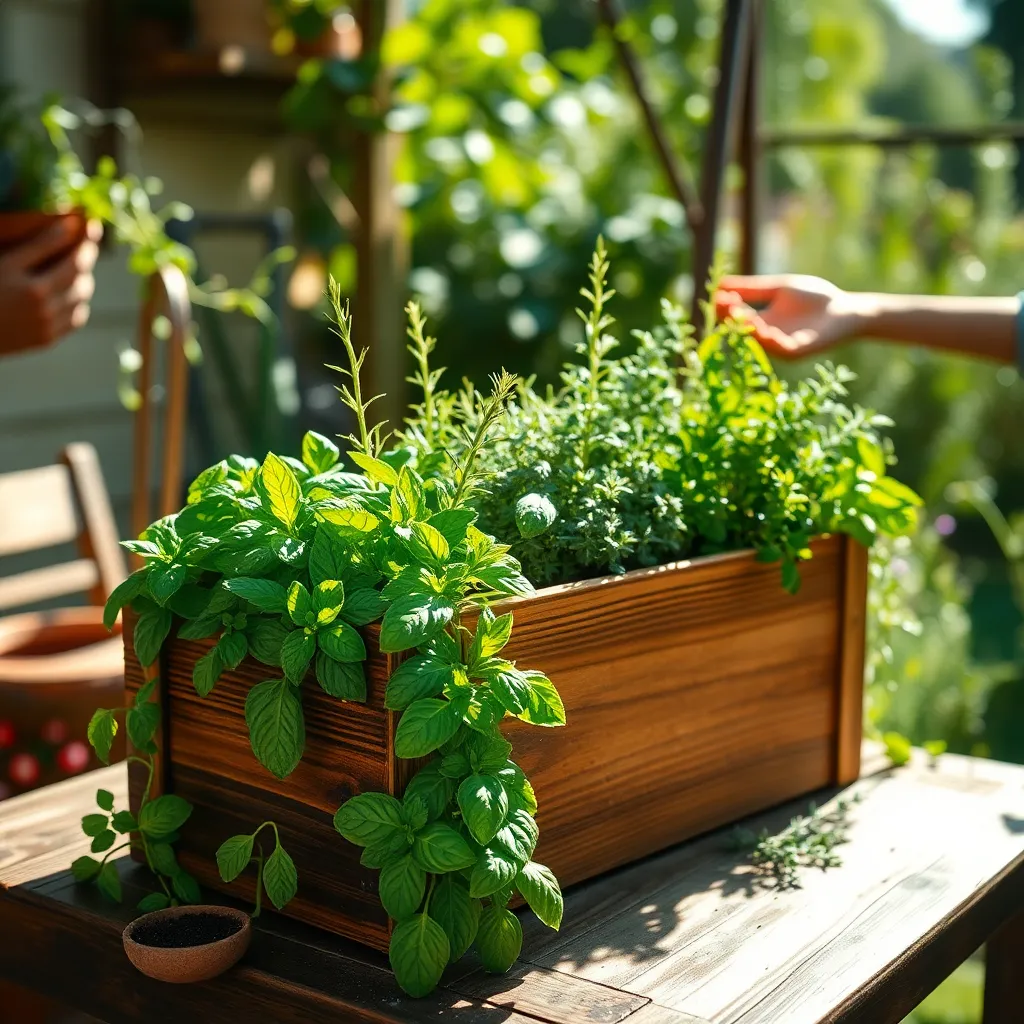
Choosing a quality herb planter is crucial for the success of your herb garden. The right planter not only supports healthy plant growth but also enhances the aesthetic appeal of your space.
When selecting a planter, consider the material it is made from as this affects both durability and moisture retention. Clay pots are great for herbs that prefer drier conditions like rosemary or thyme, while plastic pots retain moisture better, suiting herbs like basil.
Size matters as well; ensure your planter is deep enough for root development. Most herbs require a minimum depth of 6-12 inches, so opt for a planter that can accommodate this need to prevent stunted growth.
Drainage is another critical factor in choosing a planter. Look for pots with drainage holes to prevent waterlogging, which can lead to root rot—a common problem in herb gardening.
Benefits of a Garden Cart
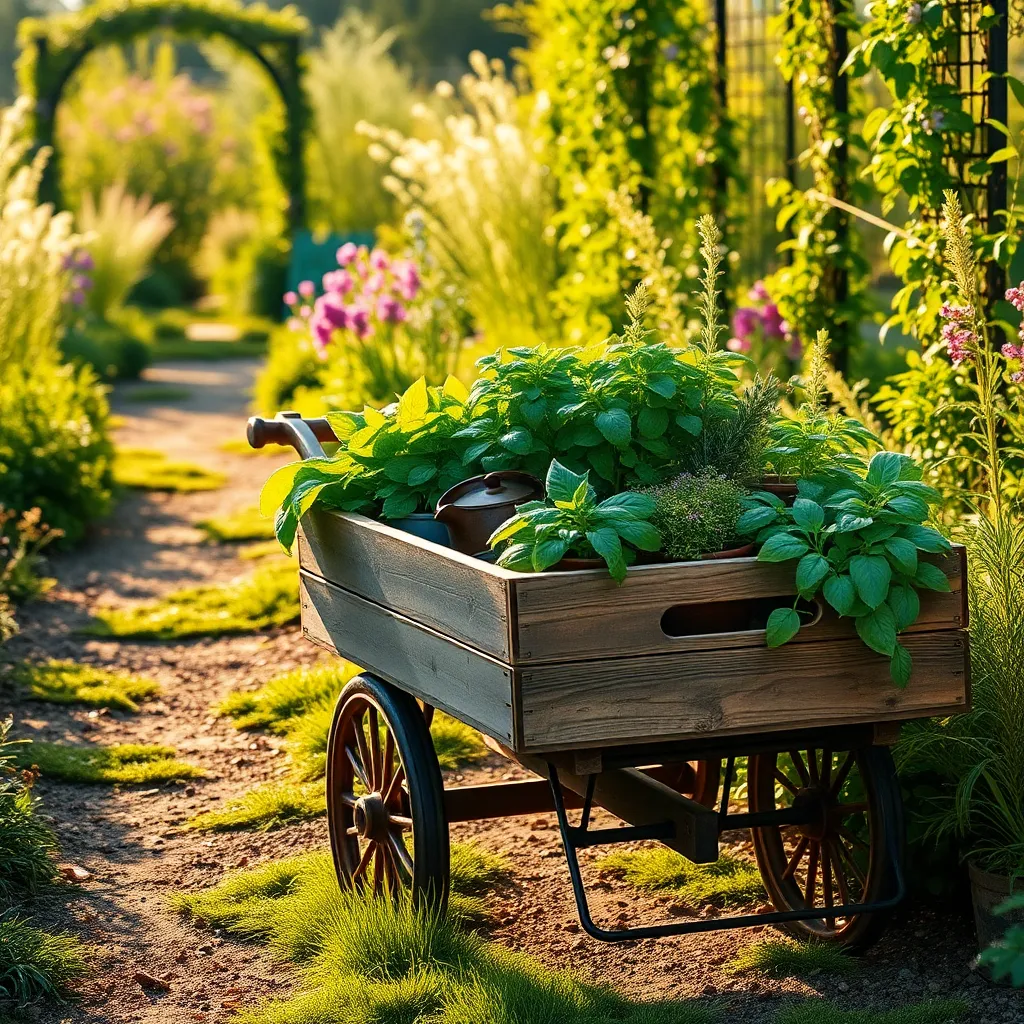
Investing in a garden cart can greatly enhance your herb gardening experience. Garden carts provide a convenient way to transport tools, soil, and plants, reducing the physical strain of carrying these items manually.
For beginners, a garden cart simplifies the process of moving materials around your garden. Whether you are planting basil, mint, or rosemary, a cart helps you keep all your essentials organized and accessible as you work.
Experienced gardeners will appreciate the time saved by using a garden cart. By efficiently moving heavy bags of potting soil or compost, you can focus more on nurturing your herbs and less on logistics.
Look for carts with sturdy wheels that can handle various terrains, from grassy lawns to gravel paths. A cart with a durable frame and a foldable design offers flexibility and easy storage when not in use.
Tool Maintenance for Longevity
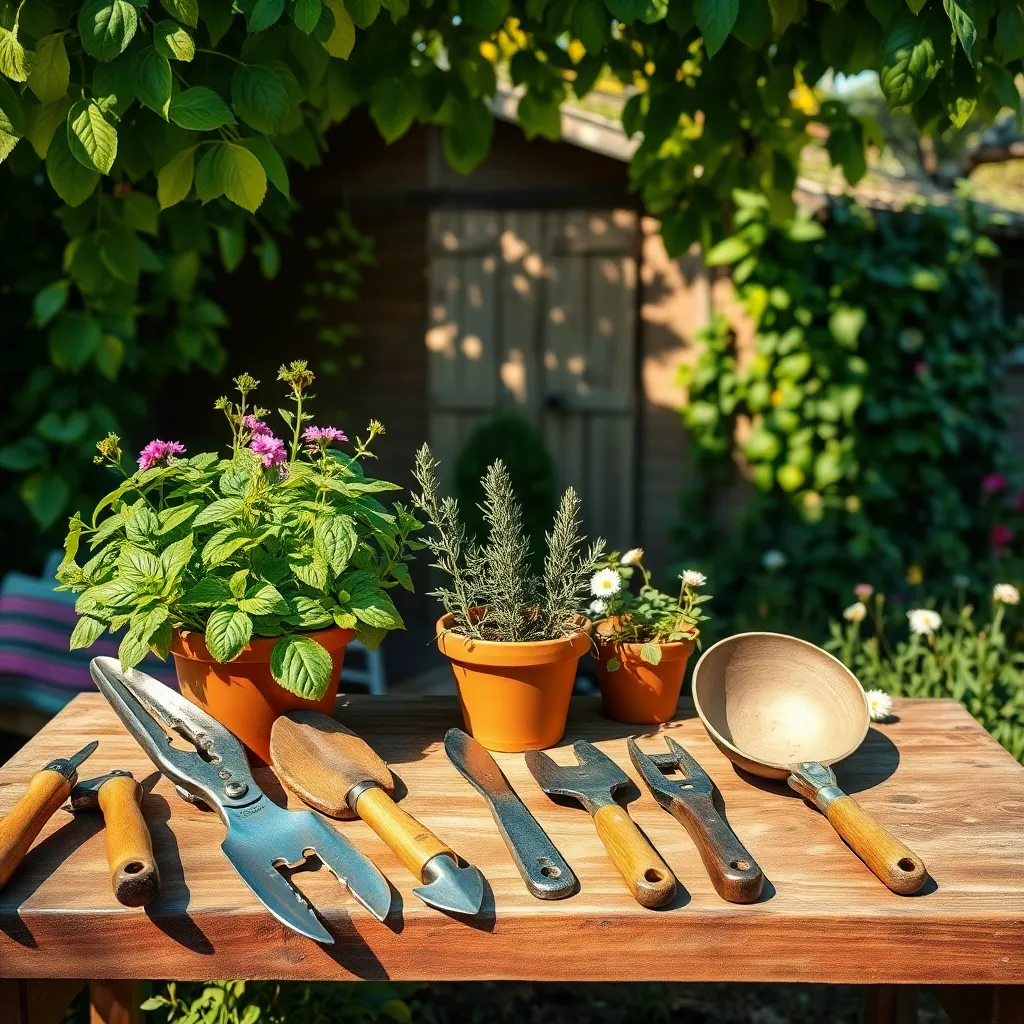
Keeping your gardening tools in top condition is vital for their longevity and efficiency. Regular maintenance not only extends the life of your tools but also ensures they perform optimally when tending to your herb garden.
Begin by cleaning your tools after each use to prevent rust and soil build-up. Use a stiff brush to remove dirt, and then rinse with water, ensuring they are completely dry before storing.
Sharpening your tools is essential for effective cutting and pruning, especially for tools like shears or pruners. Use a sharpening stone or file to maintain a keen edge, which will make your gardening tasks easier and more precise.
For tools with wooden handles, applying linseed oil can prevent drying and cracking. This practice helps maintain a smooth finish and ensures a comfortable grip, reducing the likelihood of splinters or breakages.
Conclusion: Growing Success with These Plants
In exploring the ’15 Must-Have Tools for Herb Gardening,’ we’ve uncovered essential relationship concepts that nurture growth, just as a garden requires care. From the importance of communication and empathy to the value of trust and patience, these tools serve as the foundation for flourishing relationships. We delved into the significance of quality time, the art of compromise, and the role of mutual respect, all crucial for cultivating deep connections. Additionally, understanding boundaries, practicing gratitude, and embracing vulnerability were highlighted as key to sustaining harmony and resilience.
To put these insights into action, start by choosing one relationship tool from the list and consciously apply it in your interactions this week. Notice the changes it brings, both in your relationship and personal outlook.
To ensure these valuable insights are at your fingertips, bookmark this article now. It will serve as a reliable guide, offering practical wisdom whenever you need a reminder of the core elements that strengthen bonds.
Remember, relationships, much like gardens, thrive with consistent effort, care, and attention. By integrating these tools into your daily life, you’re setting the stage for a future of enduring, fulfilling connections. Let this article be your trusted companion on this journey.

